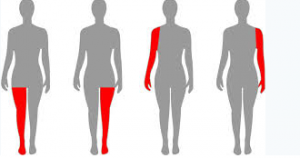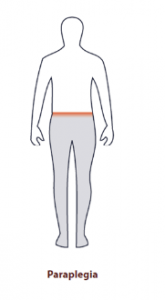Overview
A pilonidal cyst is an unusual pocket in the skin that usually contains hair, dirt and skin debris. The cyst is almost always near the tailbone at the top of the buttocks. When a pilonidal sinus becomes infected it can turn into an abscess or cyst. It can cause severe pain and may ooze pus and blood and have a strong odor.
A pilonidal sinus infection mostly affects men and is also common in young adults. It’s also more common in people who sit a lot, like cab drivers.
You may not have any noticeable symptoms at first other than a small, dimple-like depression on the surface of your skin. However, once the depression becomes infected, it will quickly develop into a cyst (a closed sac filled with fluid) or an abscess (a swollen and inflamed tissue where pus collects).
Your doctor may prescribe antibiotics if the skin around your pilonidal cyst is inflamed, but antibiotics will not heal the cyst or make it go away.
This is the preferred method for your first pilonidal cyst. Your doctor makes a cut into the cyst and drains it. They remove any hair follicles and leave the wound open, packing the space with gauze.
It’s a simple procedure done under local anesthesia, meaning the doctor numbs just the area around the cyst. You have to change the gauze often until the cyst heals, which may take up to 3 weeks.
Symptoms
A pilonidal cyst may not cause symptoms. But if it’s infected, the skin around the cyst may be swollen and painful. Symptoms of an infected pilonidal cyst include:
- A pit near the top of the buttocks crease.
- Pain.
- Inflamed, swollen skin.
- Pus or blood leaking from an opening in the skin.
- An odor from draining pus.
What are the causes of a pilonidal sinus infection?
The exact cause of an infected pilonidal sinus isn’t known, but it’s believed to be a combination of changing hormones hair growth, and friction from clothes or from spending a long time sitting.
Activities that cause friction, like sitting, can force the hair growing in the area to burrow back under the skin. The body considers this hair foreign and launches an immune response against it, similar to how it would react when dealing with a splinter.
This immune response forms the cyst around your hair. Sometimes a person may have multiple sinuses that connect under the skin.
The signs of an infection include:
- pain when sitting or standing
- swelling of the cyst
- reddened, sore skin around the area
- pus or blood draining from the abscess, causing a foul odor
- hair protruding from the lesion
- formation of more than one sinus tract, or holes in the skin
You may also experience a low-grade fever, but this is much less common.
Pilonidal Cyst Treatments
Can a pilonidal cyst go away on its own?
Sometimes, your cyst may open and drain on its own. If it does drain on its own, be sure to keep the area around it dry and clean.
Pilonidal cyst antibiotics
Your doctor may prescribe antibiotics if the skin around your pilonidal cyst is inflamed, but antibiotics will not heal the cyst or make it go away.
Phenol injection
For this type of treatment, your doctor will first give you a local anesthetic. They will then inject phenol, a chemical compound used as an antiseptic, into the cyst. This procedure may need to be repeated several times. Eventually, this treatment will cause the lesion to harden and close.
This treatment has a very high recurrence rate. Therefore, it’s uncommon in the United States. Doctors turn to surgery as the treatment of choice in some cases.
Laser therapy
Laser therapy won’t cure your current pilonidal cyst, but it can remove hair to prevent it from becoming ingrown. This could help keep further cysts from developing.
Pilonidal cyst surgery
If your pilonidal cyst is chronic or keeps returning, you may need surgery. You also may need surgery if the cyst worsens and creates a hole under your skin. Some forms of surgery include:
Marsupialization. In this procedure, your doctor makes a cut and drains the cyst, removing pus and any hair inside. Then, they sew the edges of the cut to the wound edges to make a pouch.
- Advantages — This is outpatient surgery under local anesthesia. It also lets your doctor make a smaller, shallower cut so that you don’t need to repack gauze daily.
- Disadvantages — It takes about 6 weeks to heal, and you need a doctor specially trained in the technique.
Incision, drainage, closing of wound. In this technique, the doctor drains the cyst, but it’s not left open.
- Advantage — You don’t need to pack gauze because your doctor fully closes the wound after surgery.
- Disadvantages — You’re more likely to have problems with the cyst in the future. It’s harder to remove the entire cyst with this method. It’s usually done in an operating room with a specially trained surgeon.
Risk factors
Factors that might increase your risk of a pilonidal cyst include:
- Being a young adult white male.
- Being overweight.
- Having an inactive lifestyle.
- Sitting for long periods at a time.
- Having thick, stiff body hair.
Pilonidal Cyst Complications
If your pilonidal cyst is not treated or keeps returning, you could develop what’s called sinus cavities (empty spaces under the skin) and pockets of infection.
Infected pilonidal cyst
An infected pilonidal cyst can be painful and is referred to as an abscess.
If your cyst is infected, the pus may smell bad, and you may get a fever and feel nauseated.
If your infected cyst worsens, the infection could spread throughout your body, which might be life-threatening.
Pilonidal cyst recurrence
Even with medical treatment, you may develop chronic pilonidal disease, which means your cysts keep coming back.
Prevention
To help prevent pilonidal cysts, try to:
- Wash regularly.
- Achieve or maintain a healthy weight.
- Avoid prolonged sitting.
If you’ve had pilonidal cysts in the past, you might want to regularly shave the affected area or use hair removal products to reduce the risk of a new cyst.
Takeaways/Conclusion
Pilonidal cysts are small fluid-filled sacs or bumps that appear along the crease or top of your buttocks. If the cyst isn’t painful, you can try treating it yourself. However, if the pain worsens or appears to get infected, you should see your doctor. Your doctor can treat the pilonidal cyst or surgically remove it. It’s important to know the signs of pilonidal cysts since they can come back after treatment.
Please note for anykind of medical assistance abroad you can always connect us on email at query@gtsmeditour.com or whatsapp us on +91 9880149003 all the latest reports and get a free medical opinion before you plan for treatment abroad.
Thankyou..!
Happy to assist..!



